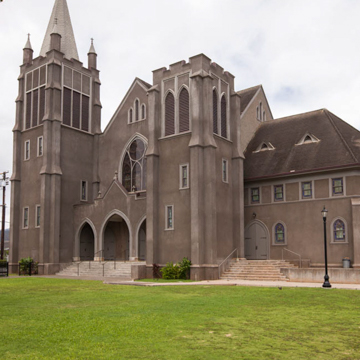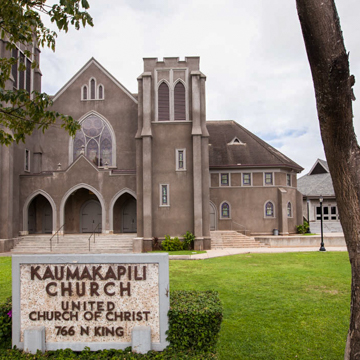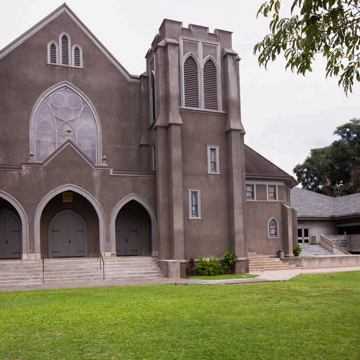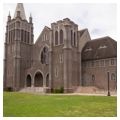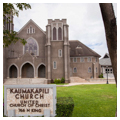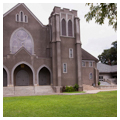The Kaumakapili church was organized in 1838, and an adobe church was completed in the following year at N. Beretania Street at the head of Smith Street, which was named after the church's first pastor, the Reverend Lowell Smith. A brick Gothic Revival church replaced the original house of worship in 1882; this building was consumed by the Chinatown fire of 1900. At that juncture, the congregation sold their downtown property and acquired the present, larger parcel in 1901. Fund-raising for the new building took time, and ground was not broken until 1910.
The stucco-on-lath Kaumakapili Church once dominated the Kalihi-Palama districts with its ninety-six-foot-high bell tower. It joins Sacred Heart Catholic Church (OA117), St. Peter's Episcopal Church (OA43), Waioli Huiia on Kauai (KA44), and the Wailuku Union Church on Maui (MA14) as one of several fine examples of Gothic Revival churches constructed between 1910 and 1914. Unlike the other churches, Kaumakapili followed the Akron plan, with its semicircular seating in the sanctuary and, in this instance, four roll-up doors allow the sanctuary to be expanded by opening it to the neighboring, pentagon-shaped auxiliary hall. The main room's curving balcony offers more seating. The large stained glass window in the sanctuary is by G. S. de Luz and P. S. Spencer of New Rochelle, New York, who left Tiffany to form their own firm. The church was restored under the direction of Mason Architects in 2004.


